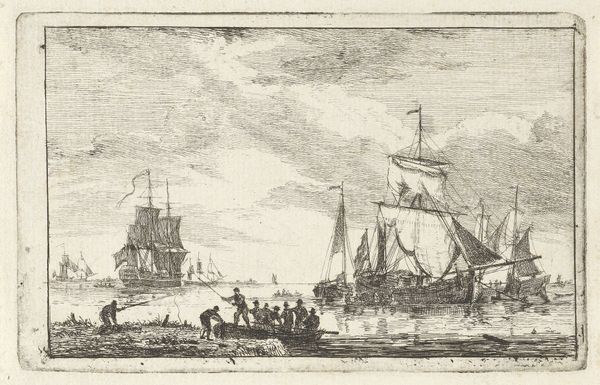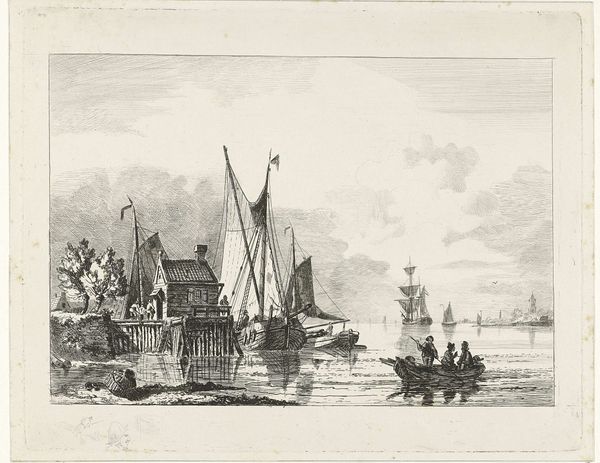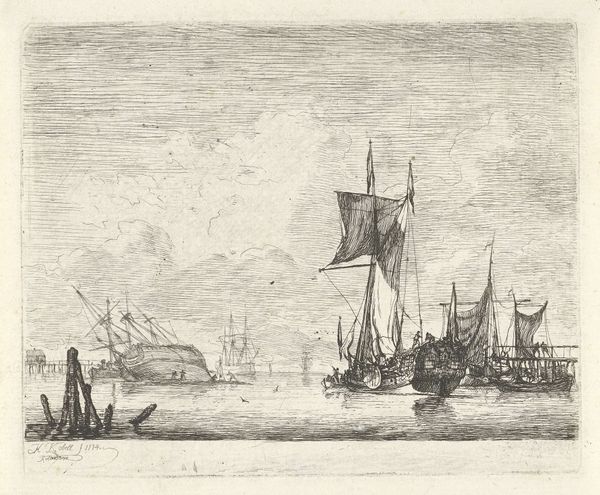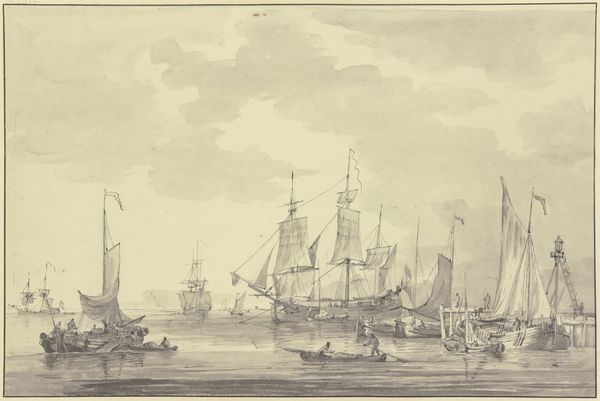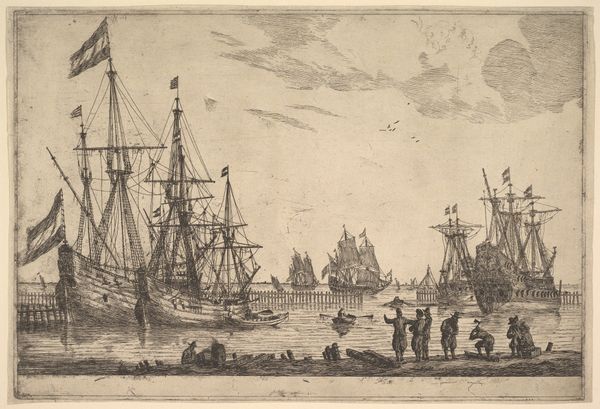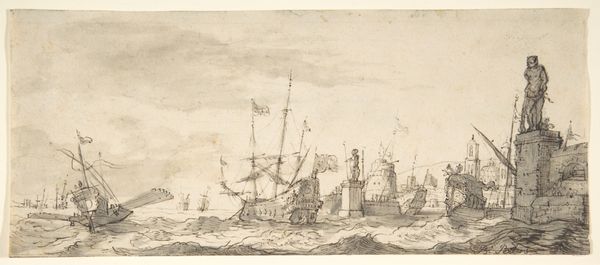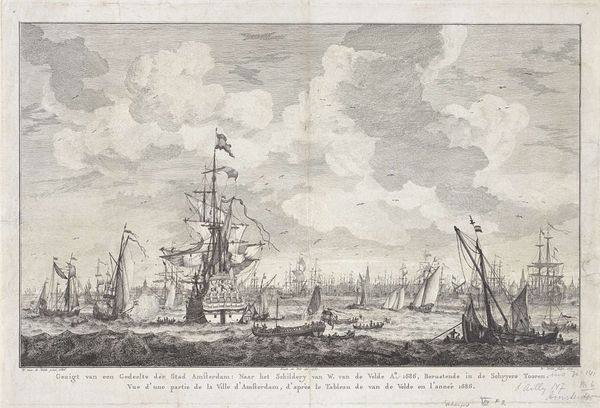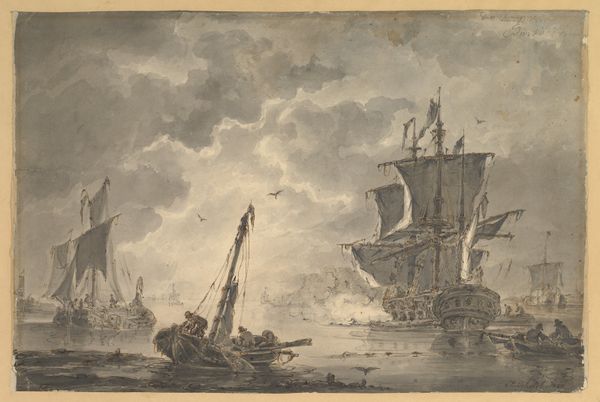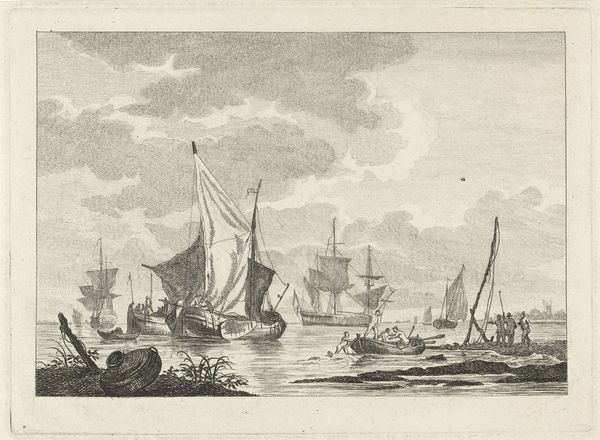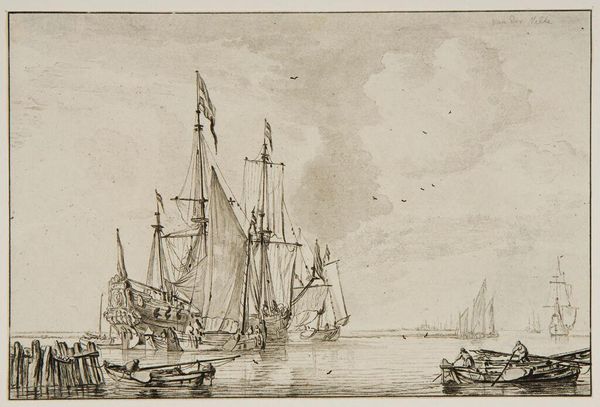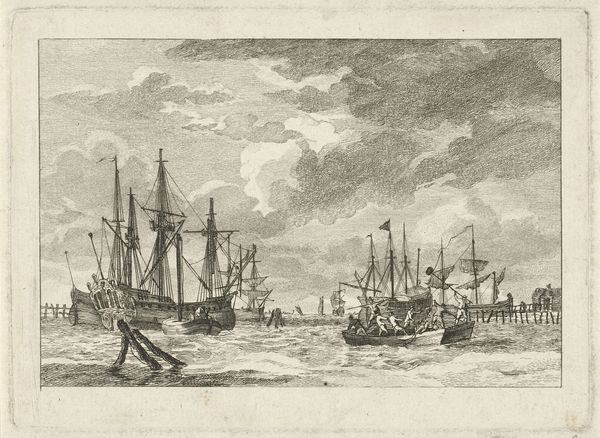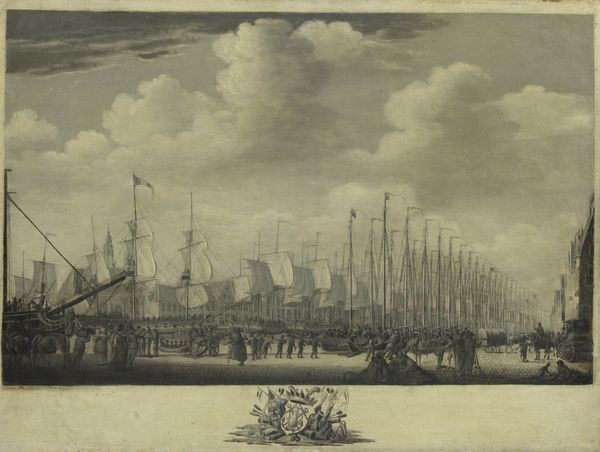
drawing, paper, ink, chalk, graphite
#
drawing
#
baroque
#
landscape
#
paper
#
ink
#
chalk
#
graphite
#
cityscape
#
history-painting
Dimensions: 290 × 388 mm
Copyright: Public Domain
Editor: So, this is "Malta, Harbor of Valletta," a drawing made around 1695 by Abraham Storck. The scene is incredibly detailed, almost photographic in its precision, but the muted palette gives it an antique feel. What do you make of the way Storck structures the composition? Curator: The immediate reading of this image relies upon the arrangement of forms and the play of light and shadow, rather than delving into anecdotal detail. Note how the dark, jagged stonework in the foreground establishes a visual anchor, a stable base from which the eye then travels towards the lighter, more airy expanse of the harbor. Editor: Yes, it’s almost like he's creating a stage. Curator: Precisely. This contrast—between the solidity of the architecture and the ethereality of the ships on the water—is key. Consider, too, how the architectural elements on either side of the drawing –the ruined archway and the imposing fortress – create a framing device, leading the viewer's eye into the pictorial space. Editor: I hadn't thought about the negative space the arch creates... it's an invitation to really "enter" the harbor. Is there a significance in the relationship between the dark and light? Curator: The drawing, with its graded tones achieved through ink, chalk and graphite, meticulously balances these light and dark areas. The dark emphasizes form and spatial depth. One could argue that these formal elements tell a story of stability and expansion through maritime dominance, simply through the structure of the work itself. How do the various structural lines play into this interpretation? Editor: Interesting, now that you point out the interplay between the lines in the structure, and their ability to tell their own story... I can now see how a harbor scene could tell a rich tale! Curator: Yes. By considering these formal arrangements we see a structured aesthetic experience. The organization elicits an underlying conceptual content related to power, trade and the sea. This reading hinges entirely on the relationships between line, tone, and form.
Comments
No comments
Be the first to comment and join the conversation on the ultimate creative platform.
